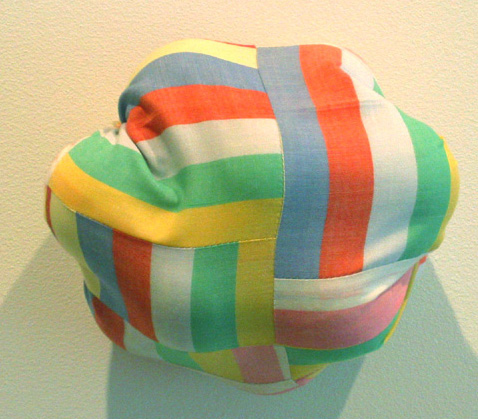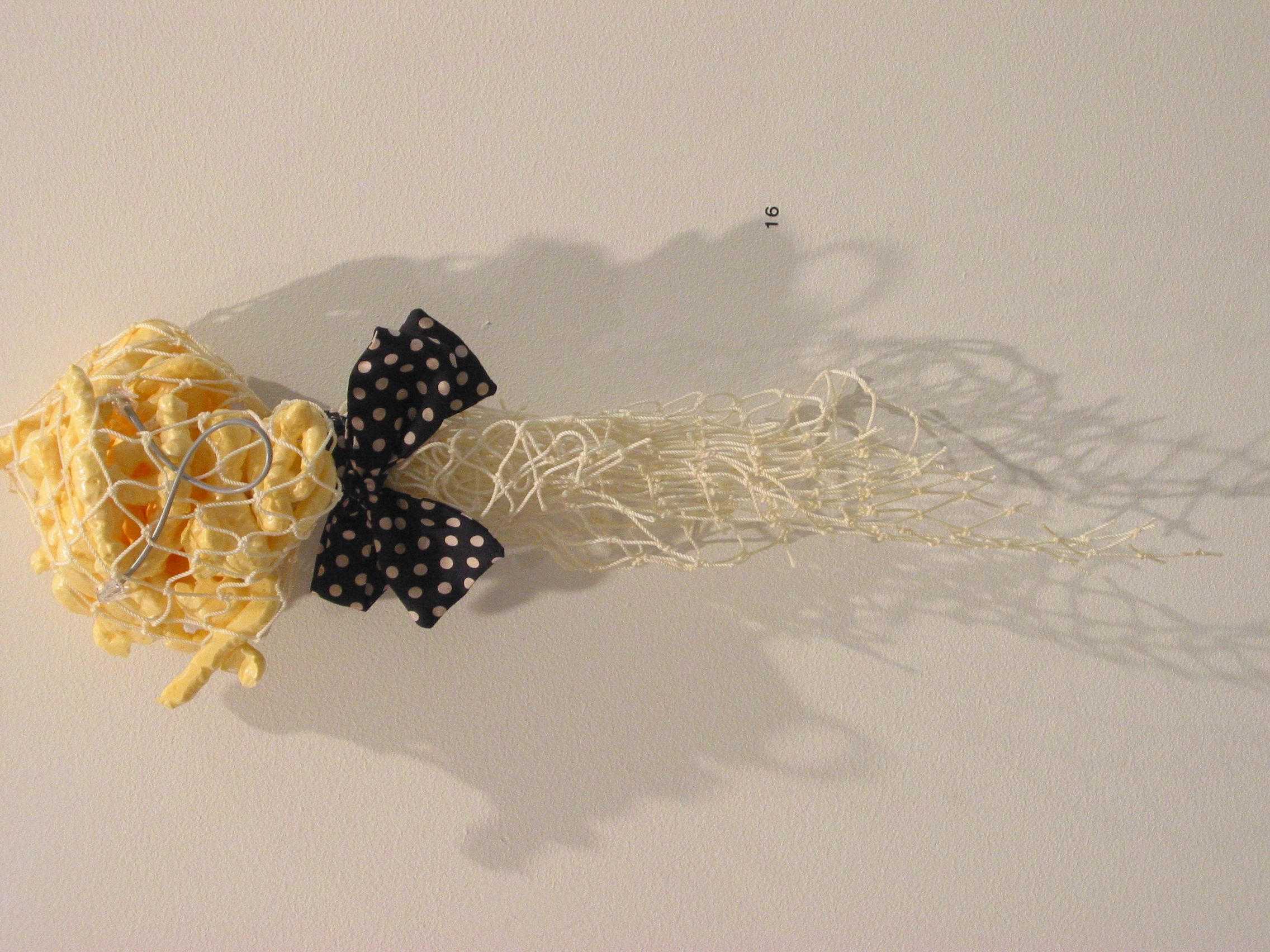Aristides Logothetis
Curated by William Fagaly
December 4, 2003 – January 24, 2004
Born in Athens, Greece in 1967, Aristides Logothetis completed his BFA from Tufts University and the School fo the Museum of Fine Arts in Boston, MA in 1996 and then graduated with an MFA from the University of New Orleans, LA, in 2001. He was resident artist at the Schloss Buchsenhausen in Innsbruck, Austria in 2001 and in Fort George, Annoto Bay, Jamaica in 2002.
In 2001, Logothetis had a solo exhibition titled Meta-Perceptions that traveled to the Brown Gallery at Duke University, Durham, NC, the Fine Arts Gallery at the University of New Orleans, LA and the Kenyon Gallery at the Schoolhouse Center for Art and Design, Provincetown, MA. He has also participated in group shows at Galerie Im Andechshof, Stadt Innsbruck, Innsbruck, Austria (2001), Arthur Roger Gallery, New Orleans, LA (2001), Bing Bang at the Isaac Delgado Community College, New Orleans, LA (2001) and The Next Wave at the Southeastern Louisana University in Hammond, LA (1999).
William A. Fagaly was the Assistant Director for Art at the New Orleans Museum of Art with additional curatorial responsibilities for Ethnographic and Contemporary American Self-Taught Art before retiring in 2001. During his 37 year tenure with NOMA, Mr. Fagaly organized over 75 exhibitions, including the New Orleans Triennial (1967-2001), the 41st Biennial Exhibition of Contemporary American Painting at the Corcoran Gallery of Art, Washington D.C. (1989), and Roots of American Jazz: African Musical Instruments from New Orleans Collections (1995).
Mr. Fagaly has also been invited to curate a variety of exhibitions by other institutions, including the Contemporary Arts Center of New Orleans, the Museum of American Folk Art, New York, and the Portland Museum of Art, Oregon. In 2004, he will serve as a guest curator for a major retrospective of Louisiana African-American self-taught artist Sister Gertrude Morgan at the American Folk Art Museum, New York and will also co-curate an exhibition of African Art at the Museum for African Art, New York.
ARTIST'S STATEMENT
I am part of a diaspora. I navigate different longings. I want to assimilate, to rebel, to absorb, to release. Of course these dichotomies are facile and exemplary of the strictures of language, rather than the true multiplicities of experience. It is these multiplicities that are most interesting to me because they offer a more real representation of the events in our perception.
While my Greek ethnicity informs my fascination with the structure of Anglo-American class and culture (including the regulation of race), my gender experience informs my fascination with identity constructs from fashion, to color, to "taste", as well as the organization and codes of power, sex, and control. In addition, the constant changes in science and technology elicit in me feelings of wonder and concern. I explore these detail-oriented investigations through my art making process.
The contradictions and structural errors of society's systems are major sources of inspiration for me. I find that these paradigms are often tenuous despite their seeming dominance. The absurdity of daily experience, my wariness of hierarchies, and my general aversion to didactic narrative, has lead me to metaphoric abstraction. The ensuing narrative, composed of mostly essential imagery, dots and lines for example, and its origination from process, reflects my interest not in specificity and oration, but rather in exploration and possibility. Still, I often work with non-art and found materials expressly for the varied metaphors inherent in them. By embracing notions that are seemingly ambiguous, whether manifested in a single artwork or extracted from a body of work, the process of observation will be enriched and perhaps revised. Specifically, I encourage the viewer of my work to visualize alternatives to hierarchies and constructs in terms of color and perspective and also in terms of socialized ideas.
CURATOR'S STATEMENT
by William A. Fagaly
The process in making art has been paramount to Aristides Logothetis' work from the beginning. As a young boy growing up in Athens, Greece, his parents would ask him to "read" their fortunes from their empty coffee cups. "After they would finish their Greek (or Turkish, or Arabic) coffee, they would turn their little demitasse cups over and let the thick grinds slowly drip down the sides. I would then look into the intricate patterns and proceed to interpret them. This had, in retrospect, a profound effect on me, as I learned to look into abstract images and search for meaning." Years later, that experience informed the "coffee drawings," an ongoing series of abstract compositions employing coffee and thinned water soluble paints mixed with organic matter normally found in the kitchen (onions, spaghetti) and "cooked" on a stove top.
After the family emigrated to the United States when Logothetis was ten years old, and undoubtedly stemming from his parents' successful artistic vocations (his mother a tailor and seamstress, his father a musician and performer), Logothetis' own creative energies evidenced themselves in diverse forms while never deviating from his pursuit as a visual artist. Before his college years, he immersed himself in punk culture and founded and served as director of a popular alternative space, Gallery Schmallery in Boston, introducing new talent in the early 1990s.
Today process continues to dictate Logothetis' art, as does experimentation with materials. In the paintings a distillation of formal elements -- line and dots and a prescribed color palette -- allows more freedom for the process to govern the work, determining how the image will be perceived, and what it will convey. Using acrylics with liquid mediums placed (dripped, poured, run) layer upon layer on a panel surface to achieve a wax-like matte surface, the cumulative image reflects a physical environment, a character. The separation between a uniform ground and the built up imagery varies among the paintings from unambiguous to nonexistent, while the space between layers is suggestive. Ambiguity supports reading the images structurally as a universal macrocosm or as a microcosm of matters' building blocks.
The sculptures inhabit walls, floor, ceiling, pedestals and, like the paintings, are metaphorically referential. Through the choice of materials - tennis balls (spheres or dots), neckties and Madras plaid Bermuda shorts (a visual ordering of color and lines in a grid) - and their interaction, Logothetis mocks the American preppy and bourgeois society in which he found himself, while humor manifests itself in the absurdity of the object, its inherent gesture. An undercurrent of eroticism with suggestions of body parts and fluids often permeates the work.
Protein
playfully suggests a male sensuality as well as a DNA/biomorphic molecular strand. Utilizing commonly recognizable objects with certain societal references, this readymade character reinforces his intent "to celebrate the act of transformation, to affirm that ideas can elevate, and to force perception on different levels."
View CATALOGUE





